
Me 163B
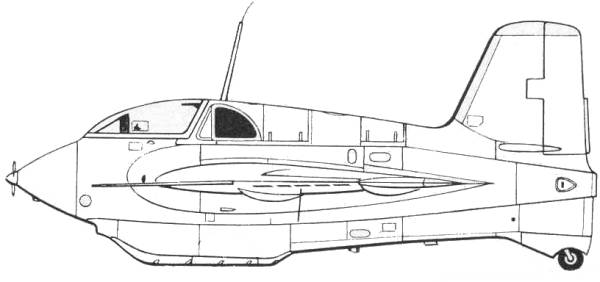
The Me 163B Komet was for all intents and purposes a complete redesign of the 163A which was a proof of concept aircraft. It retained the basic configuration, that of a swept wing tailless airframe powered by a rocket motor. Messerschmitt was given a contract for 70 preproduction aircraft plus six prototypes. Construction began in December of 1941 with the first example being rolled out in April of 1942. Unfortunately problems with the rocket motor delayed delivery of production units. The second prototype was delivered to Peenemunde where it was joined during the summer month by further prototypes. An extensive flight test program was conducted with the unpowered aircraft even including gunnery trials. More than two-thirds of the 70 preproduction aircraft had been delivered before the first flight cleared rocket motor arrived at Peenemunde in July of 1943. The first powered flight was made in August. Messerschmitt was responsible for the preproduction aircraft only and those not allocated "V" numbers received the designation Me 163Ba-1 and were assigned to service evaluation tasks. The first production Me 163B-1a was accepted by the Luftwaffe in May of 1944. Even at this late date the rocket motors were still experiencing problems and the touchy rocket fuels were prone to exploding if the aircraft suffered a hard landing. By this time bombing, lack of rocket fuels and trained pilots severly limited the use of the fighter and although some success were had in the end it would prove far more dangerous to those who flew it than those it flew against.
The Kit
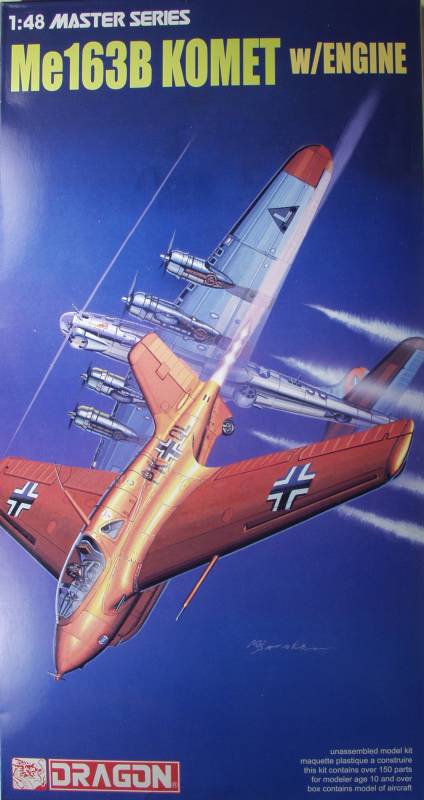
Although not a jet powered aircraft I felt this bird fit better in this catagory so here it is !
The Dragon kit has it's roots in the Trimaster series of kits that were ultimately bought out by Dragon. It has been released a number of times in the past and this is the current version which for the first time has a displayable rocket motor. The kit is unusual in that you actually get two complete sets of fuselage sprues. One could build a complete aircraft and a second fuselage with the tail section removed showing the rocket motor. A stand is supplied to hold this second wingless fuselage. Inside the box one finds six bags, two each with duplicate fuselage parts, one with the wings, one with the rocket motor and stand parts, one with some miscellaneous parts and one with a fret of photoetch. The kit is molded in a medium gray plastic with recessed panel lines and rivet detail. The parts are relatively flash free with some of the small parts having a bit more flash than the main airframe parts. The surface is smooth and glossy and I found no surface blemishes or sink holes. The only ejector pin marks I found that would show were on the inner sides of the wooded service stand. The fabric control surfaces are not overdone and all are molded in place. The cockpit is well appointed and seat belts and harness are supplied in the PE along with some other structural details and the propellor for the generator in the nose. The kit includes four figures, two standing pilots in their special acid proof suits and two maintenance personel. Altogether there are 132 parts in gray however many of these are duplicates and aren't required for the basic aircraft. See photos below. Note: duplicate sprues not shown.
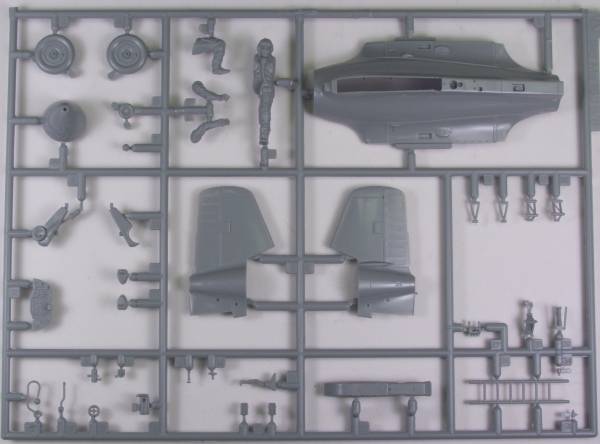
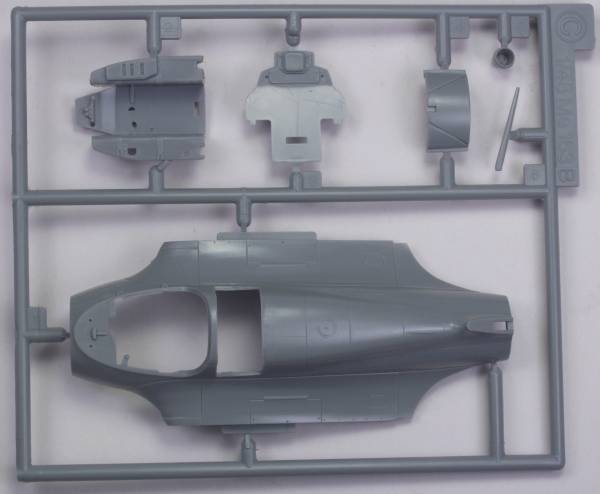
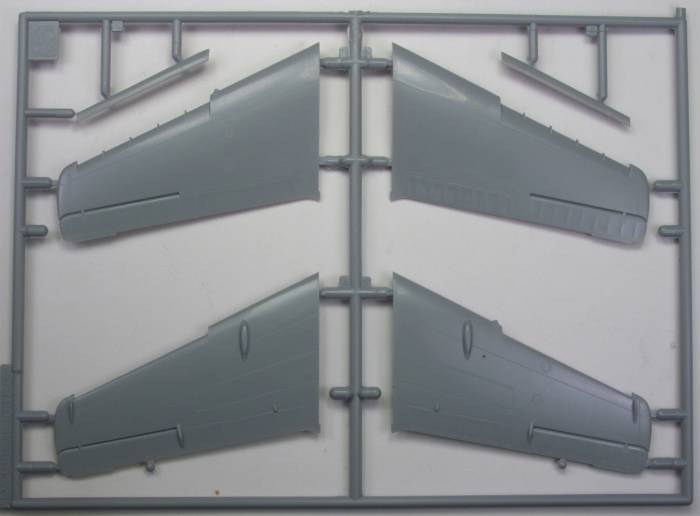
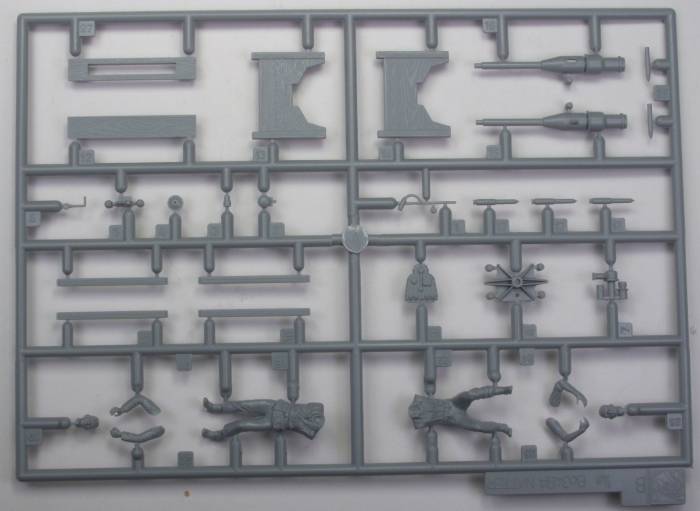
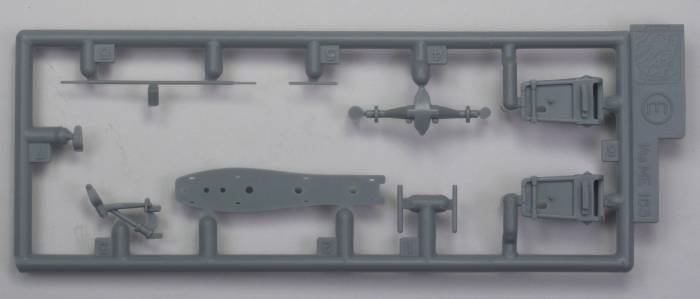
The clear parts are clear relatively thin and consist of four parts as shown below. With these the total count for the kit comes to 136 plastic parts.
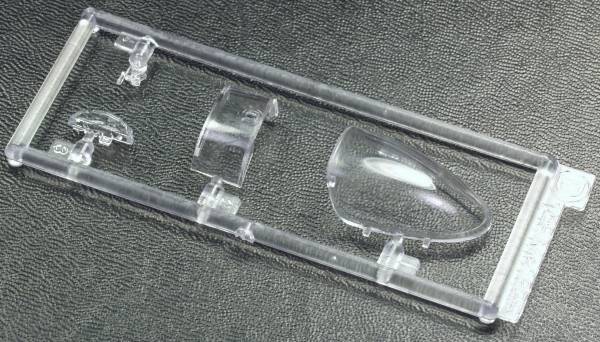
The decals include markings for five aircraft, four from JG 400 and one from Erprobungskommando 16. The decals are presented on two sheets, appear thin and well registered and include a fair amount of stenciling. See below.
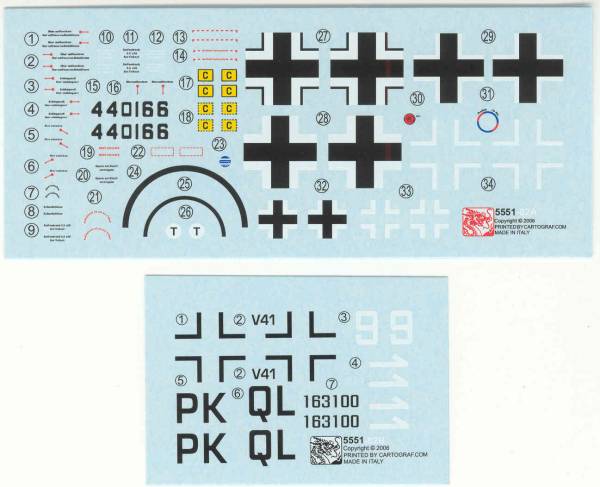
The photoetch fret is fairly limited but at least supplies the belts and harness and some other goodies to dress things up. See below.
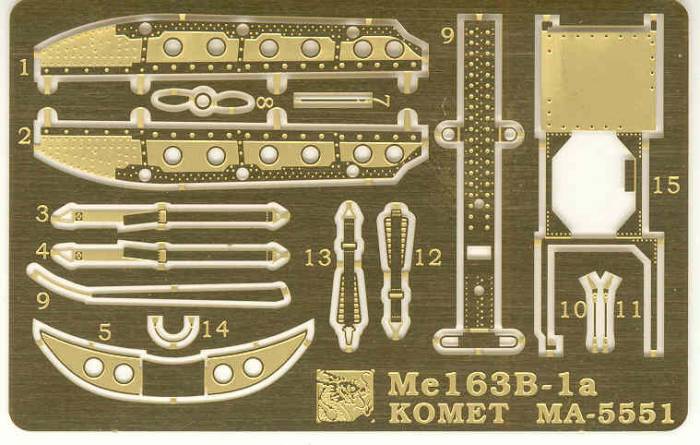
The instructions are on one long sheet folded to form 8 panels. The first panel has a parts map, the second general instructions, an icon chart and a color chart listin Mr. Color and Model Master numbers and well as listing colors by name and in some cases RLM numbers and the first two assembly steps, the next four and a half panels are the rest of the assembly steps and the balance of the panels covers paint and markings instructions.
Conclusions
This is a nice kit in spite of its age. It was state of the art when new and has held up very well both technically and the dies themselves. I would expect based on other former Trimaster kits that there will be some fit issues but nothing that trial fitting shouldn't over come and would recommend it to all but the very beginners in the hobby.
Links to kit build or reviews
A review / build can be found here.
References
"War Planes of the Third Reich" by William Green
Back to WW II Jets page
Updated 6/20/08